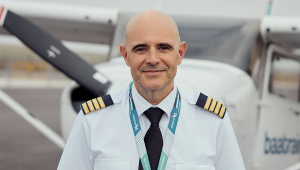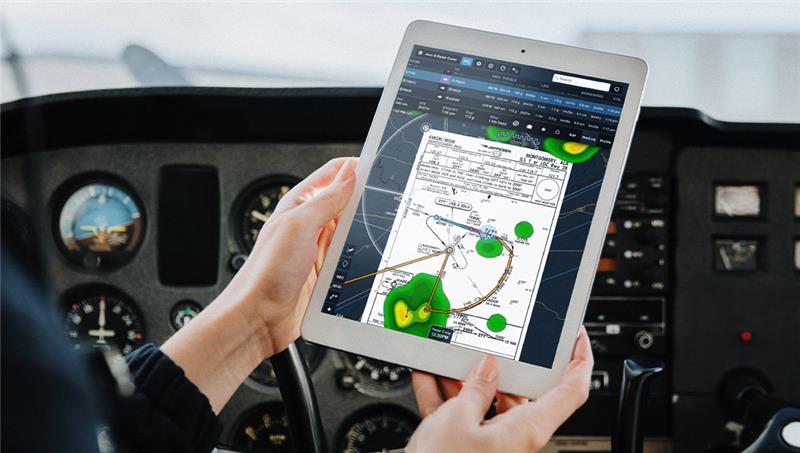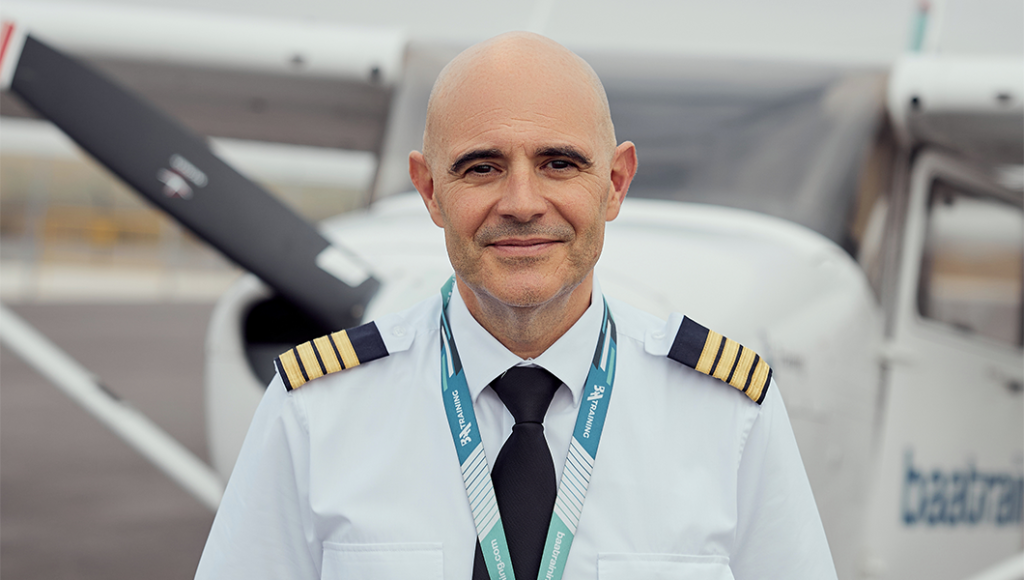 Not too long ago, a pilot’s bag was filled with a stack of papers—procedure checklists, charts, and manuals. Today, as the industry moves towards paperless solutions, like Electronic Flight Bags (EFBs), Virtual Reality-based (VR) training, and glass cockpits, to name a few, Roma Andreu Rifa, Flight Instructor for Ab Initio training at BAA Training, notes that this has, in a way, become a double-edged sword for pilot training academies, when it comes to initial pilot training.
Not too long ago, a pilot’s bag was filled with a stack of papers—procedure checklists, charts, and manuals. Today, as the industry moves towards paperless solutions, like Electronic Flight Bags (EFBs), Virtual Reality-based (VR) training, and glass cockpits, to name a few, Roma Andreu Rifa, Flight Instructor for Ab Initio training at BAA Training, notes that this has, in a way, become a double-edged sword for pilot training academies, when it comes to initial pilot training.
In its essence, a paperless cockpit replaces traditional printed materials with electronic flight bags (EFBs), digital checklists, and real-time data integration. Most European commercial airlines have adopted the EFBs, replacing traditional paper-based navigation and operational documents. The rise is also seen in the EFB market. The market was valued at USD 3.24 billion in 2023 and since then, has been expected to reach USD 6.01 billion by 2032. As EFBs become a more common standard, flight schools across Europe are integrating these tools into their training programs early on to prepare pilots for the future working conditions.
“Pilot training academies, flight schools—we’re all part of an extremely interconnected industry, and with a clear move toward paperless cockpits on the airlines’ side, we cannot fall behind and need to implement changes accordingly to keep the training in line,” explains Andreu. “However, the training with the paperless cockpit in mind is a rather mixed bag for the initial pilot training.”
The issue Andreu highlights is the ability to truly understand and master the basics of flight that these digital implementations can actually hinder. And this is an opinion that several training academies share.
“Depending on the training program, our students can use tablets with the Foreflight app and approach Jeppesen charts, which are usually limited to the IFR (Instrument Flight Rules) phase. But, in general, we discourage the use of electronic devices and apps during the initial phase of their training, until they excel in the basics. The early stages of pilot training are significant in building the key skills the right way. Digital tools are important, and we can’t deny the fact that the industry is digitalizing, but some skills can only be truly mastered the old-fashioned way, if you will.
“Otherwise, there’s a risk of cadets relying too much on the automation of certain processes that, on one hand, aid them, on the other, negatively impact SITA (Situational Awareness, Initiative, Tactics, and Adaptability)—a crucial set of competencies that ensure pilots can operate safely and effectively, especially in complex or unexpected scenarios.”
Looking at the pilot training academies themselves, it is a pretty common occurrence to have implemented at least parts of EFBs or the paperless cockpit environment, and is something that almost all academies have endeavored, says Andreu.
“Some are in a 100% paperless environment, and in that sense, new generations of pilots-in-training are quite familiar in both learning and working like that, so right now, it looks like the digital-born generations will be much more comfortable and skilled with EFBs that the ones sitting on their left—the Captains from the older generation.”
Despite the somewhat split opinion in the training segment on whether to go fully 100% paperless cockpit or still retain an environment that is tried-and-true in helping hone the necessary skills during the initial pilot training, there are still hurdles in bringing full or partial implementation of this.
One of such challenges is regulatory and certification barriers that some flight schools might face. Once committed to the EFB route, academies must ensure that their training aligns with the appropriate guidelines set by EASA, FAA, or any other applicable regulatory body. Andreu notes that an approval for an EFB in Europe might take anywhere between 6 months to a year, very much depending on the complexity of the system, further compliance requirements, and even operator readiness for adoption.
Another hurdle that flight schools encounter is the investments needed for digitalization. Andreu explains that it requires an important change in procedures and investments in equipment, software, and systems to support a flawless user experience.
As the aviation industry continues its shift toward digitalization, pilot training academies simply have to strike a balance between embracing modern technology and preserving the fundamental skills essential for safe and effective flight operations.
While paperless cockpits and EFBs prepare cadets for the realities of commercial aviation, the risk of over-reliance on automation remains a valid concern. The challenge lies in integrating digital tools without compromising foundational training principles—ensuring that pilots not only navigate with cutting-edge technology but also develop the critical thinking and adaptability required in high-pressure scenarios. In the end, the goal remains the same: to produce skilled, competent, and safety-conscious pilots, regardless of whether they learn with a tablet or a traditional checklist in hand.







